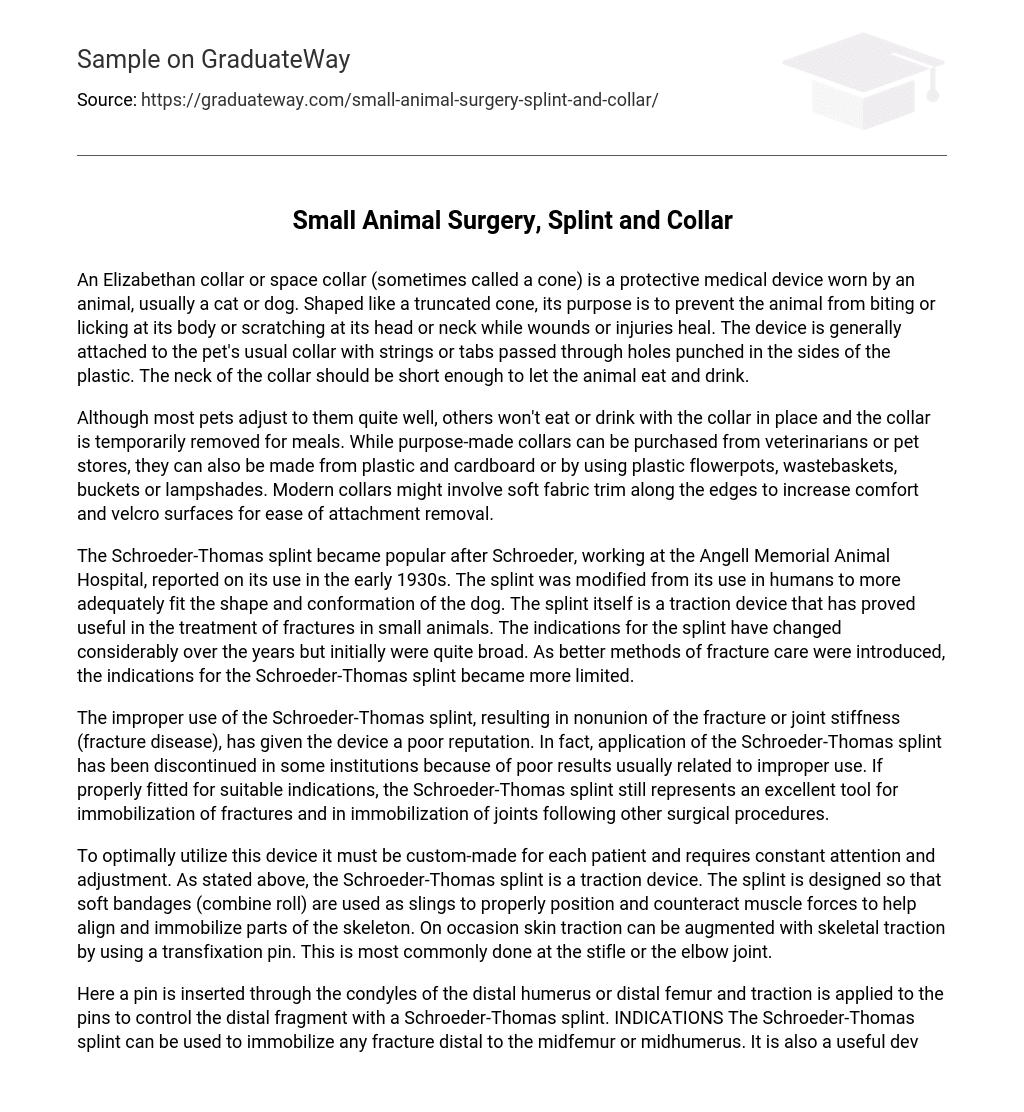An Elizabethan collar or space collar (sometimes called a cone) is a protective medical device worn by an animal, usually a cat or dog. Shaped like a truncated cone, its purpose is to prevent the animal from biting or licking at its body or scratching at its head or neck while wounds or injuries heal. The device is generally attached to the pet’s usual collar with strings or tabs passed through holes punched in the sides of the plastic. The neck of the collar should be short enough to let the animal eat and drink.
Although most pets adjust to them quite well, others won’t eat or drink with the collar in place and the collar is temporarily removed for meals. While purpose-made collars can be purchased from veterinarians or pet stores, they can also be made from plastic and cardboard or by using plastic flowerpots, wastebaskets, buckets or lampshades. Modern collars might involve soft fabric trim along the edges to increase comfort and velcro surfaces for ease of attachment removal.
The Schroeder-Thomas splint became popular after Schroeder, working at the Angell Memorial Animal Hospital, reported on its use in the early 1930s. The splint was modified from its use in humans to more adequately fit the shape and conformation of the dog. The splint itself is a traction device that has proved useful in the treatment of fractures in small animals. The indications for the splint have changed considerably over the years but initially were quite broad. As better methods of fracture care were introduced, the indications for the Schroeder-Thomas splint became more limited.
The improper use of the Schroeder-Thomas splint, resulting in nonunion of the fracture or joint stiffness (fracture disease), has given the device a poor reputation. In fact, application of the Schroeder-Thomas splint has been discontinued in some institutions because of poor results usually related to improper use. If properly fitted for suitable indications, the Schroeder-Thomas splint still represents an excellent tool for immobilization of fractures and in immobilization of joints following other surgical procedures.
To optimally utilize this device it must be custom-made for each patient and requires constant attention and adjustment. As stated above, the Schroeder-Thomas splint is a traction device. The splint is designed so that soft bandages (combine roll) are used as slings to properly position and counteract muscle forces to help align and immobilize parts of the skeleton. On occasion skin traction can be augmented with skeletal traction by using a transfixation pin. This is most commonly done at the stifle or the elbow joint.
Here a pin is inserted through the condyles of the distal humerus or distal femur and traction is applied to the pins to control the distal fragment with a Schroeder-Thomas splint. INDICATIONS The Schroeder-Thomas splint can be used to immobilize any fracture distal to the midfemur or midhumerus. It is also a useful device for immobilization of joints distal to and including the knee and distal to and including the elbow. The indications for use of this splint can be extended in the hands of some veterinarians but to do so requires constant and careful supervision of the animal and its splint.





